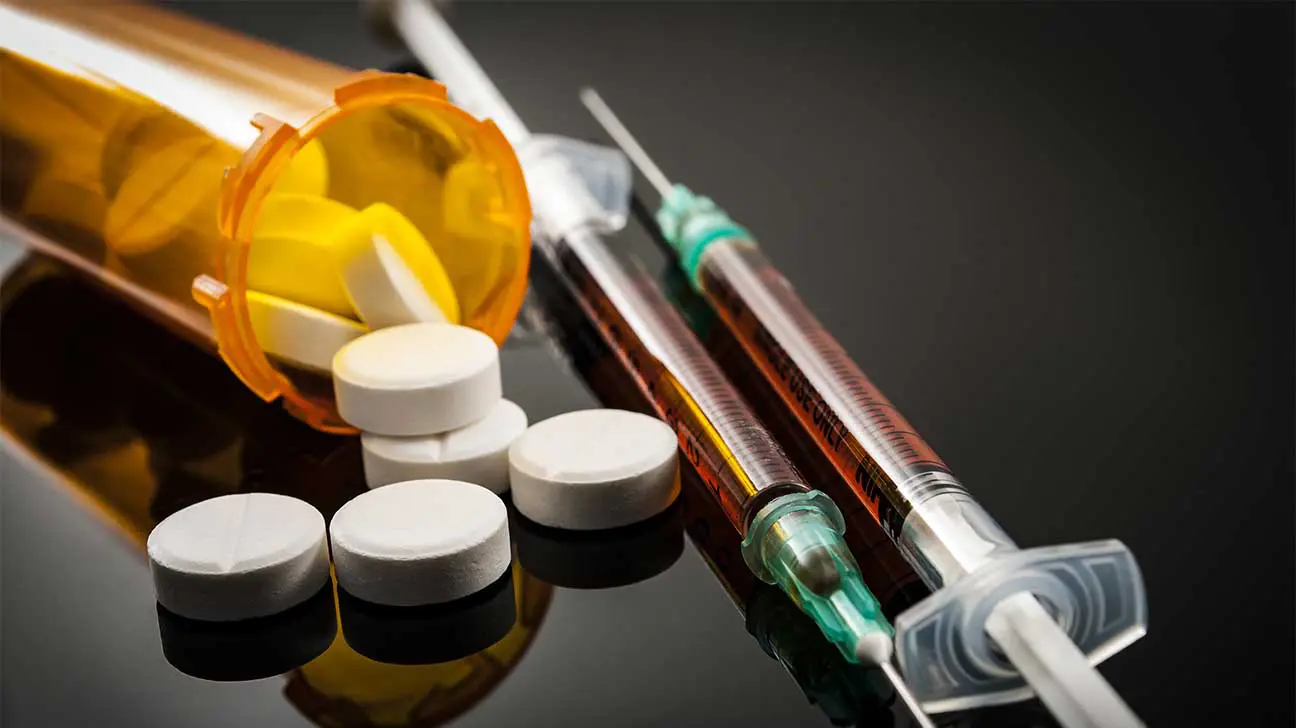
Oxycodone is an ingredient that is commonly added to medications (Percocet, OxyContin) that help people who have moderate to severe pain. It was originally invented as a substitute for heroin because researchers thought it would be less addictive.
Unfortunately, the opposite occurred. Now, thousands of people struggle with oxycodone abuse issues. Usually, the pill is swallowed whole. But after a person builds a tolerance to it, they may start injecting the substance instead.
What Happens When You Shoot Oxycodone?
In order to understand how to shoot oxycodone, it is important to know that this medication has safeguards built into it in an attempt to limit a person from being able to abuse it. To start, oxycodone is mainly available as an extended-release pill that breaks down slowly in the body over time.
When it is being abused, oxycodone is often crushed up and mixed with a carrier liquid so that it can be injected into the veins, which eliminates this safeguard. This allows it to hit the bloodstream all at once, which gives a person a greater high than they would experience if they waited for it to slowly dissolve in their stomach.
Side Effects Of Oxycodone Injection
The side effects of shooting oxycodone occur because of the way that the opiate suppresses the central nervous system of the body. Usually, the central nervous system responds to danger or stress by increasing perspiration, heart rate, and blood pressure.
The central nervous sysetem’s job is to prepare the body for the potential need to fight against the source of danger or stress or flee from it. However, when it is suppressed, it can’t react properly.
Physical Side Effects
The physical side effects of oxycodone abuse are mainly in regards to the limitations that it puts on the central nervous system. As soon as the oxycodone injection enters the bloodstream, it immediately causes a sedative effect. Sleepiness, muscle weakness, and feelings of relaxation occur.
Psychological Side Effects
An oxycodone injection has psychological side effects that many people aren’t aware of, such as the way the medication limits the ability to think clearly, make good decisions, and focus on tasks that need to be done. Apathy, a shortened attention span, and impulsivity are also common.
Behavioral Side Effects
The addictive effects of shooting oxycodone are what cause the following behavioral side effects:
- going to many different doctors to get multiple prescriptions for the medication
- lying or stealing to get more oxycodone
- avoiding responsibilities
- avoiding friends and family members
- purchasing oxycodone from drug dealers
Dangers Of Shooting Oxycodone (Injection)
When a person is first learning how to shoot oxycodone, they may not understand the damage to their skin and veins that can occur if an injection isn’t done properly.
Bent, dirty needles might be used, which could lead to the following conditions:
- cellulitis
- gangrene
- HIV
- hepatitis
- staph infections
Blood clots and collapsed veins are possible, too, and contribute to dangers to the heart.
Frequent Runny Noses
Before a person starts injecting oxycodone into their body, they often crush the medication up so they can snort it. The effects of shooting oxycodone are more serious than those that occur from inhaling it into the nostrils. Still, snorting oxycodone isn’t safe because it can cause frequent runny noses from the irritation to the delicate lining of the nose.
Low Blood Pressure
One of the short-term effects of shooting oxycodone is low blood pressure. This symptom is extremely dangerous because it can cause someone to die. Some of the signs of low blood pressure to look out for are weakness, dizziness, brain fog, and fatigue. These symptoms of low blood pressure may improve if a person drinks water or a caffeinated beverage.
Weakened Pulse
A weakened pulse occurs from oxycodone abuse because the drug suppresses the normal signals that the heart would receive that tell it to beat faster. It also relaxes the heart muscles so that they can’t contract as well as they would if the substance wasn’t in the body.
Respiratory Failure
Respiratory failure is possible with oxycodone abuse when the substance is taken in high doses or combined with other opiate-based medications or alcohol. This symptom occurs most often when a person overdoses from injecting too much of it into their body at once.
Their breathing becomes more shallow as soon as the medication hits their bloodstream. Then, it finally stops altogether. Sometimes, a person can be put on a respirator to keep them alive until the drug can be flushed out of their system or an opiate antagonist can be administered to block the effects of the medication. This only works if they receive medical care in less than an hour of the overdose, however.
Heart Failure
The long-term effects of shooting oxycodone are the most damaging to the heart because the organ simply can’t keep up with the stress that it endures from trying to keep the blood moving through the body.
This stress is worse if a person takes central nervous system stimulants with oxycodone as part of a polydrug abuse problem. Some of the signs of heart failure include fluid in the lungs, frequent coughing, fatigue, and swelling in the abdomen, ankles, and legs.
Unfortunately, once this condition begins, it isn’t reversible. Medications and oxygen therapy are needed for the rest of the short life that a person has because of the condition.
How To Find Treatment For Oxycodone Addiction
Seeking treatment for oxycodone addiction is important because the drug can cause long-term health problems, such as heart failure or respiratory failure. It can also put someone at risk of an overdose that could kill them if they don’t receive treatment in time.
Since oxycodone is an opiate-based medication, it can cause someone to become physically dependent on it very quickly, which can lead to uncomfortable withdrawal symptoms that make it difficult to stop taking the drug. Because of this, our addiction treatment specialists strongly urge anyone who needs treatment to contact them for more information on how to find a rehab center in their area.
Addiction Resource aims to provide only the most current, accurate information in regards to addiction and addiction treatment, which means we only reference the most credible sources available.
These include peer-reviewed journals, government entities and academic institutions, and leaders in addiction healthcare and advocacy. Learn more about how we safeguard our content by viewing our editorial policy.
- U.S. National Library of Medicine: MedlinePlus — Oxycodone
https://medlineplus.gov/druginfo/meds/a682132.html - U.S. Food and Drug Administration — Percocet
https://www.accessdata.fda.gov/drugsatfda_docs/label/2006/040330s015,040341s013,040434s003lbl.pdf


